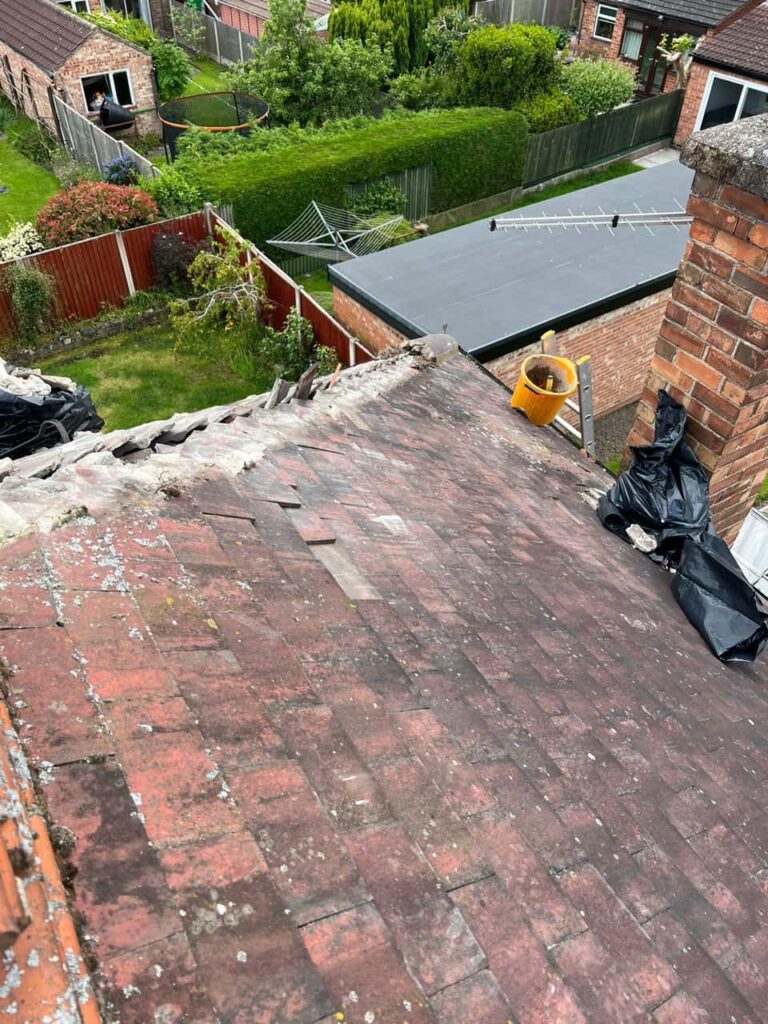Leadwork plays a crucial role in maintaining the integrity and weatherproofing of your roof. From chimneys to flashings, valleys, and gutters, lead has been a reliable material in roofing for centuries due to its durability and flexibility. However, even lead can suffer from wear and tear over time, and if left unchecked, small leadwork issues can escalate into major roof repairs. At MCM Roofing Repairs Sturminster Newton, we specialise in diagnosing and repairing leadwork problems to prevent significant damage to your roof. In this post, we will discuss common leadwork issues and how addressing them early can save you from costly repairs.
1. Lead Flashing Deterioration
Flashing is used around chimneys, vents, and valleys to seal gaps where the roof surface meets vertical walls or roof joins. Over time, lead flashing can deteriorate due to constant exposure to the elements.
- What to Look For: Cracks, gaps, or missing sections in the flashing can lead to leaks and water ingress, which may go unnoticed until it causes internal damage.
- Why It Matters: Damaged flashing can allow water to seep into the roof structure, leading to rot, mould growth, and even structural weakening if left unattended.
2. Thermal Movement Leading to Cracks
Lead is prone to expansion and contraction due to temperature changes. This natural process, known as thermal movement, can cause lead sheeting to crack or become distorted over time, particularly if the installation was not done correctly.
- What to Look For: Inspect your roof for visible cracks or buckling in the leadwork, particularly around chimneys, valleys, and other junctions.
- Why It Matters: When lead expands and contracts excessively, it creates cracks that allow water to penetrate the roof, leading to leaks and moisture damage inside your property.
3. Lead Corrosion
Although lead is a highly durable material, it can still corrode over time, especially in areas where it is exposed to acidic rain, pollution, or excessive moisture. Corrosion is particularly common on older roofs or in environments where the air contains higher levels of sulphur or other pollutants.
- What to Look For: Signs of corrosion include white or grey powdery deposits on the leadwork. Over time, these deposits can weaken the material and cause it to break down.
- Why It Matters: Corroded lead loses its ability to protect the roof effectively, leading to potential leaks and water damage. If corrosion is severe, sections of the leadwork may need to be replaced to prevent further problems.
4. Poor Installation Practices
Incorrect leadwork installation is a common cause of roof leaks and damage. Whether it’s improper sizing, poor fitting, or a lack of expansion joints to accommodate thermal movement, poorly installed leadwork can lead to significant problems.
- What to Look For: If you’ve recently had leadwork installed and notice leaks or visible signs of misalignment, it could be due to improper installation techniques.
- Why It Matters: Poorly installed leadwork may fail prematurely, leaving your roof vulnerable to water ingress and necessitating costly repairs or replacements.
5. Lead Slipping or Lifting
Another common issue with leadwork, particularly on older roofs, is the slipping or lifting of lead sheets. This can occur due to the natural movement of the roof structure or because the leadwork has not been securely fastened.
- What to Look For: Check for visible lifting or gaps between the lead sheets and the roof surface. Loose leadwork can often be identified by flapping or rattling noises during windy conditions.
- Why It Matters: Slipping or lifting leadwork allows water to penetrate beneath the roof covering, leading to damage to the underlying materials. If not addressed quickly, this can result in serious leaks and the need for extensive roof repairs.
Conclusion
Leadwork is an essential component of many roofs, providing protection against water ingress and contributing to the roof’s overall durability. However, like all roofing materials, lead is subject to wear and tear over time. By addressing common leadwork issues such as deterioration, thermal movement, corrosion, poor installation, and slipping, you can avoid major roof repairs and keep your home well-protected.
At MCM Roofing Repairs Sturminster Newton, we offer expert leadwork inspection and repair services to ensure your roof remains in top condition. If you suspect that your leadwork is in need of attention, contact us today to schedule an inspection and prevent minor issues from becoming costly problems.
Call us on: 01258 442 298
Click here to find out more about MCM Roofing Repairs Sturminster Newton
Click here to complete our contact form and see how we can help with your roofing needs.

